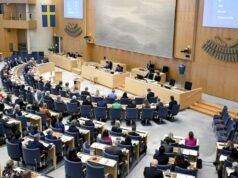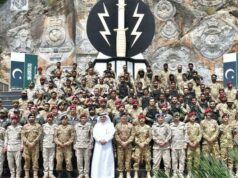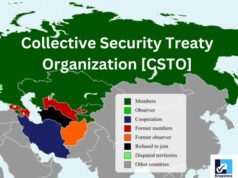TKS TALES : Our Minds

By
Air Commodore T K Sen, Veteran
It was a cloudy morning in Delhi. The year was 1967. The retiring Vice President was on his farewell tour. On that day he was in Muzaffarpur in Bihar. The VP had been provided with an IL-14 for the trip by the Communication Squadron.
The hot news in the corridors of Western Air Command (WAC) that morning was that the Ground Starter trolley at Muzaffarpur had become unserviceable. No possibility of a local ‘standby’ existed. The VP had to continue with his planned visit. Therefore a replacement had to be sent from Delhi.
The Comn Squadron had no aircraft that could lift a trolley without time consuming modification of its passenger cabin. The problem thus landed in the lap of the Air II of WAC. A rapid scanning of resources indicated that one IL-14 ( of 43 Squadron ?) was physically available at Palam.
The aircraft was immediately appropriated for the task. The crew consisted of two young pilots and two or three SNCOs. They were called to the Command HQ for a meeting. That is where I met these boys for the first time.
I was then the OPS -I of WAC. The offices or Air-I and Air II were adjacent. I over heard the mention of Muzaffarpur and my ears pricked up. I had my uncle in that town and I had not seen the old man for quite a while. My table that morning was free of files and I had nothing particular to do. The aircraft was going to Muzaffarpur now and would be coming back by the evening. If I could only go…
I knocked on the Air-I s door. He was not amused but did not prevent me from my proposed galavant. I went to the Air-II. He had no objection to my travelling as a supernumerary pilot. My name got included as a part of the crew. As I was about to run down to the ground-floor I crossed the path of Air-I again.
He assumed that I was about to run away for half a day and said that I should clear my half-day absence from work from the SASO (Senior Air Staff Officer, my super boss). The SASO’s nod for the trip was also obtained. We then rushed to the Technical Area of Palam where the aircraft was parked.
Loading the Starter Trolley took some time. We departed with a task that could be summarised As : Load at Palam- Destination Muzaffarpur – Unload – Patna for refuelling – back to Palam. A straightforward task.
At Muzaffarpur I talked the airport officer into providing me with a transport. Very quickly I went home. Chacha Chachi were pleasantly surprised. Charan-Sparsh and a plate of food, and I was back at the airport.
The load was not yet down. Fortunately the VP was also late. All went well. After the departure of the VP we were ready to go. We were about 2 hours behind our planned departure time.
After taxiing out the captain told me that instead of refuelling at Patna, we would be picking up fuel at Bakshi Ka Talab. I was a bit surprised. I did not know whether the captain had the authority to change a flight plan issued by the Air-II. Being just a glorified passenger on this flight I did not comment or interfere. We set course for Bakshi Ka Talab.
The weather enroute was bad and was getting worse. Contact on VHF radio was unsatisfactory. As we came close to Lucknow we seemed to be heading into a solid wall of cloud. Bakshi refused to accept us.The airfield was under an active thunder-storm. The Captain turned the aircraft towards Kanpur and called Chakery.
Chakery VHF did not respond for a long time. When contact was ultimately established we were told that Chakery was closed for runway repair. We turned back towards Lucknow and called the civilian airfield Amausi. This airfield was willing to accept us. They informed us that the airfield was experiencing light rain.
They were then requested for urgent refuelling. We were still on our way back from Kanpur when Amausi called up to say that there was no AVGAS with them, which is the fuel we needed. They only stocked AVTUR, the fuel type needed by civil aviation. They advised us not to come as they would have difficulty parking us overnight.
We were now in trouble. Fuel was running low. Our aircraft was in a holding pattern, in and out of a cloud mass. Finding the aircraft in a holding pattern I went into the cockpit and asked the co-pilot what the situation was. The co-pilot told me the highlights of the situation. I then turned to the captain and asked him about his plan. He did not respond, so I repeated my question. He turned to look at me – I saw panic in his eyes.
He obviously had no plan. He broke eye contact and looked forward again. I felt pretty sure that he was being gripped by panic. Something had to be done. I gently tapped him on the head with my knuckles. He was startled and he looked at me again. I told him gently – Kanpur is closed – Bakshi has a thunderstorm – you are short of fuel and you have to land.
Amausi is available, land there. He was still not out of his confusion. He said – “But sir they have no space to park, they won’t let me land.” I put my hand on his shoulder and spoke as calmly as I could – “Declare a fuel emergency – they will have to let you in.” The look on his face changed back to normal. He at last had something to do and he knew that he could do it. He declared a fuel emergency and landed at Amausi.
In fifteen minutes or so the thunderstorm moved away from Bakshi Ka Talab. I spoke to the base commander and persuaded him to accept our flight to land for refuelling. That should have been the end of the story, but the Flight Safety Man inside me would not let me stop. While his aircraft was being refuelled I cornered the Captain for a chat. Why did he change the flight plan? Initially he said that weather was uncertain therefore he wanted to return early.
That reason was a little difficult for me to accept at face value as he could have requested for a change of plan before starting the task. After some further persuasion he admitted that there was a function at home and he wanted to reach home in time for it. Having got that inconvenient fact off his chest he became his normal self. He thanked me for helping him and we parted company.
I did not report the incident then, but I have always felt that the lessons of the incident should be percolated in the world of aviation and outside. Today, more than 50 years after the incident, let me sieve it for the lessons.
The seed of this incident was laid when the crew was hijacked on their way home. Was the captain asked by the authorising and tasking authority about his availability? I am not suggesting that the tasking authority needs to take the pilot’s approval before he is tasked. I am assuming that the Flight Commander and/or the CO of the unit would have known about his social engagements. I am assuming the the Air-II staff would have consulted with the CO/FltCdr about the task before hijacking the aircraft and crew. I am assuming that if/when asked, the unit would have told the Air-II staff about the social event who in turn would have commiserated with the pilot about his missing out on his party, and I am assuming the pilot would not have fretted and consumed a dose of gethomitis if he knew that the Service cares. Am I assuming too much ? Perhaps yes. But I know of units / Officers Commanding / Flight Commanders where such expectations would be fulfilled.
The seed of the incident was nurtured by an eroded self discipline of the pilot
• Did the pilot think of modifying the flight-plan before starting from Delhi ? If ‘yes’, then
• He should have had the flight plan officially modified
• Should have collected briefing for route weather and terminal facilities. He would have immediately realised that Delhi-Muzaffarpur-Bakshi Ka Talab would leave him with very little fuel and no diversions. Non-availability of Kanpur would have forced him to stick to the authorised flight plan and stop fretting mentally about his party.
• If the idea of modifying the flight plan occurred to him only after the delay at Muzaffarpur then
• He would be faulted for flight planning without sufficient route and terminal data in the face of known marginal weather condition with no possible diversions and with known marginal fuel condition. That would indeed be a case of bad airmanship.
Perhaps the situation was compounded by a feeling of guilt or regret playing on his mind that caused him to let panic overtake him when he had to face multiple adverse situations. In my opinion, if he did not have to carry some sort of fear or guilt in his mind he would not have panicked.
This was a complex case which fortunately avoided possible disaster. I debated with myself and decided not to mention the incident either to the Air-II or to the pilot’s CO. I felt that my detailed debrief given to the pilot would have to suffice in this case. Then why have I decided to put it in public domain after 53 years ? You can say it is just cleaning of my memory backlog.
But in my own mind the motivation is different. While we investigate accidents that take place from aeronautical mechanical environmental and training aspects, we seldom investigate what was in the pilot’s mind.
Such an investigation is difficult. None of us are trained for such an investigation. Such enquiries are also socially problematic. Then what would be the solution? My advise would be simple. Do not wait for an accident to happen. Within the unit, in day to day acts of leadership and camaraderie, try to be in tune with your unit men. Avoiding psychological pitfalls and strengthening mental resolve will follow.



